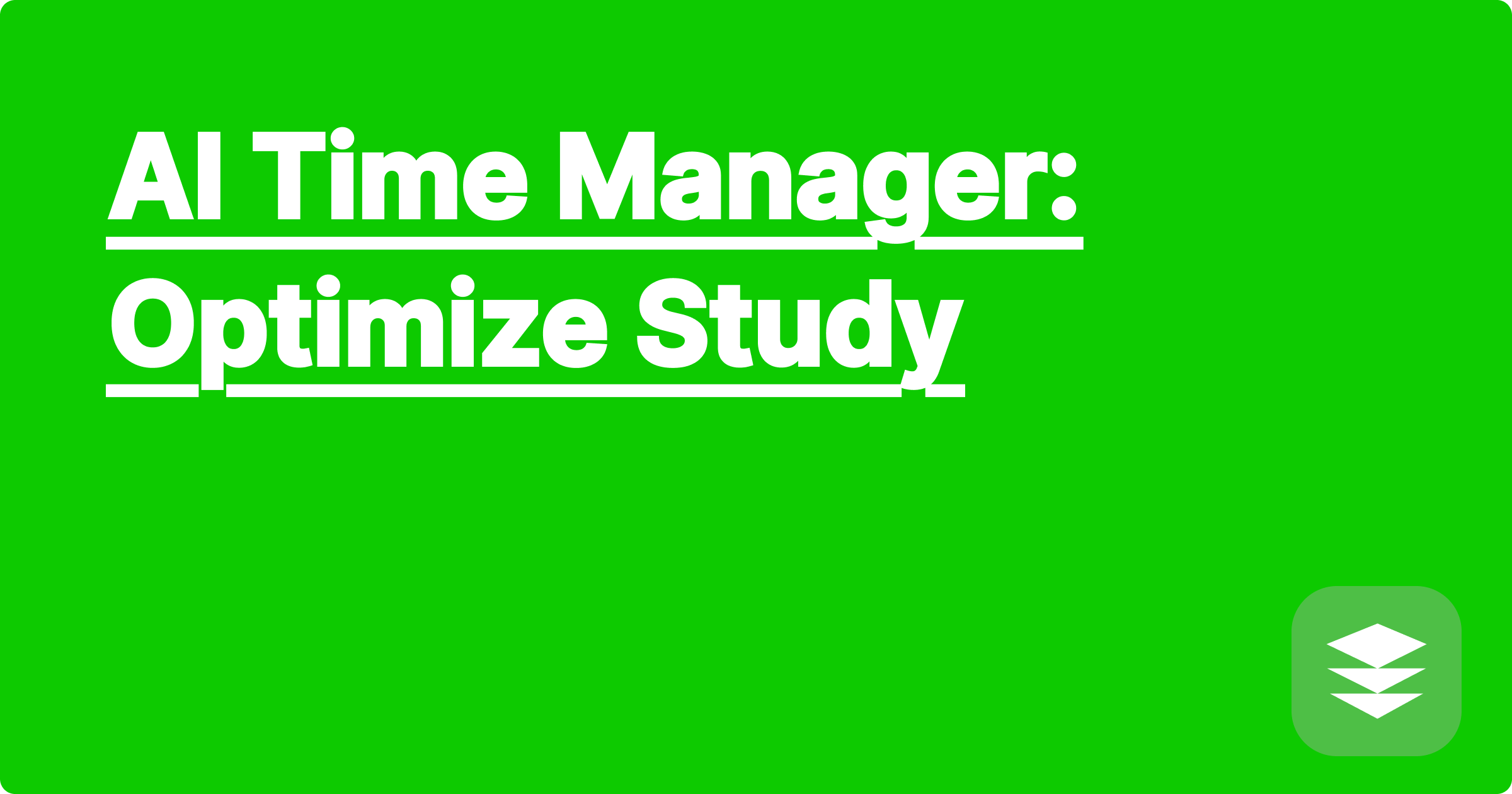
The demanding world of STEM education and research often leaves students feeling overwhelmed. Balancing complex coursework, rigorous research projects, and personal life can be a constant struggle. Fortunately, the rise of artificial intelligence offers a powerful new toolkit to conquer these challenges and unlock unprecedented levels of academic success. AI-powered tools are transforming the way STEM students learn, manage their time, and approach their studies, offering personalized learning experiences and optimized workflows.
For STEM students and researchers, effective time management isn't just about meeting deadlines; it's about maximizing learning and research output. The ability to efficiently allocate time to different tasks, prioritize effectively, and maintain focus can significantly impact academic performance, research breakthroughs, and overall well-being. This blog post will explore how AI-powered time management tools can revolutionize your academic journey, providing practical strategies and real-world examples to help you thrive in the demanding world of STEM.
STEM fields are inherently challenging, requiring deep understanding of complex concepts, rigorous problem-solving skills, and extensive research. Students often face information overload, struggling to keep up with vast amounts of material and demanding assignments. Traditional time management techniques, while helpful, often fall short in addressing the unique challenges faced by STEM students, who need to balance theoretical learning with practical application, lab work, and often, demanding research projects. The pressure to excel can lead to burnout, stress, and ultimately, hinder academic performance. Furthermore, research in STEM fields often involves navigating complex literature, analyzing large datasets, and collaborating with colleagues, all of which demand effective time management and organization.
AI-powered platforms like the fictional GPAI (Generalized Personalized AI Interface), or real-world tools like Notion AI, Otter.ai, and Wolfram Alpha, offer a transformative solution. These tools can analyze your learning patterns, identify your strengths and weaknesses, and create personalized study plans that optimize your learning process. Imagine having a virtual tutor that understands your individual needs and guides you through the most effective learning path. GPAI, for instance, can generate customized study schedules based on your course syllabus, deadlines, and personal learning preferences. It can even break down complex tasks into smaller, manageable steps, making the learning process less daunting and more achievable.
Integrating AI into your workflow begins with identifying your specific needs. Are you struggling with time management, note-taking, or research? Once you pinpoint your challenges, you can explore the various AI tools available. For instance, if you find note-taking tedious and time-consuming, Otter.ai can transcribe lectures and meetings, freeing up your cognitive resources to focus on understanding the material. If you struggle with research, Semantic Scholar can help you navigate the vast landscape of scientific literature, identifying relevant papers and summarizing key findings. GPAI can integrate with your calendar and other productivity apps to create a seamless workflow. It can analyze your existing schedule, identify time-wasting activities, and suggest optimal time slots for studying and research.
Consider a physics student struggling with mechanics. GPAI can recommend relevant simulations and interactive exercises tailored to their specific difficulties. It can even analyze their problem-solving approach, identifying areas for improvement and providing personalized feedback. For a chemistry student, AI-powered tools can predict reaction outcomes, model molecular structures, and provide insights into complex chemical processes. A biology student can use AI to analyze genomic data, identify protein structures, and explore complex biological pathways. In mathematics, Wolfram Alpha can assist with symbolic computations, solve complex equations, and generate visualizations, freeing up students to focus on understanding the underlying concepts.
To maximize the benefits of AI in your STEM studies, start by experimenting with different tools and finding what works best for you. Don't be afraid to integrate multiple AI tools into your workflow. For instance, use Otter.ai for note-taking, Wolfram Alpha for problem-solving, and GPAI for overall study planning and time management. Combine AI tools with established time management techniques like the Pomodoro method. Set realistic goals and break down large tasks into smaller, manageable chunks. Regularly review your progress and adjust your strategies as needed. Most importantly, remember that AI is a tool to enhance your learning, not replace it. Stay engaged with the material, actively participate in discussions, and seek help from professors and peers when needed.
Finally, remember that academic success is not just about grades and publications; it's also about maintaining a healthy work-life balance. AI tools can help you achieve this balance by optimizing your workflow and freeing up time for personal pursuits. Integrate mindfulness and stress-reduction techniques into your routine. Consider using AI-powered meditation apps or mental health resources to manage stress and maintain a positive mindset. By embracing the power of AI and combining it with effective learning strategies, you can unlock your full potential, achieve academic excellence, and thrive in the exciting world of STEM. Start exploring these tools today and embark on your journey towards a more efficient and fulfilling academic experience.
AI Time Manager: Optimize Study
AI Study Prep: Conquer STEM Exams
AI Homework Help: STEM Problem Solver
AI for Physics: Simulations & Models
AI Chem Help: Simulations & Models
Smart Study: AI Time Management
AI Lab Reports: Data Analysis Made Easy